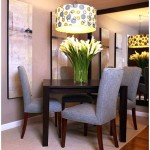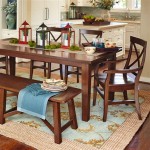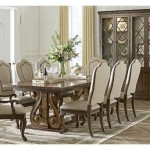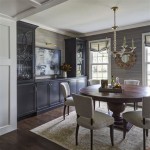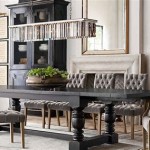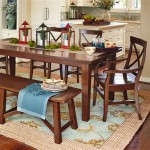Living Room and Dining Room Combined: Creating a Cohesive and Open Living Space
Combining the living room and dining room is a popular home design trend that offers several advantages. This open layout creates a more spacious, airy, and cohesive living space, encouraging easy flow between different functional zones. Whether you live in a small apartment or a sprawling home, integrating your living and dining areas can bring numerous benefits to your everyday life and entertaining experiences.
Pros of Combining Living Room and Dining Room:
Space Optimization: Combining the two rooms into one eliminates unnecessary walls, creating a larger and more open space. This is particularly beneficial for smaller homes or apartments where every square foot counts.
Improved Flow and Accessibility: An open layout allows for seamless movement between the dining and living areas. This makes it easier to serve guests, entertain, or simply relax and enjoy the company of others while cooking or dining.
Enhanced Lighting: With fewer walls obstructing the natural light, a combined living and dining room benefits from improved illumination. This creates a brighter and more inviting atmosphere, making the space feel more expansive.
Cohesive Design: Integrating the living and dining rooms allows you to create a cohesive design scheme that flows throughout the space. This continuity creates a harmonious aesthetic, making the rooms feel like one unified area.
Considerations Before Combining:
Furniture Arrangement: Careful planning is crucial to ensure that the combined space is both functional and visually appealing. Proportionately sized furniture and strategic placement will create distinct yet connected zones.
Focal Point: Determine a focal point for each area to define its purpose. For the living room, this could be a fireplace, a large sofa, or a piece of art. For the dining room, a table serves as the natural focal point.
Lighting Plan: A well-thought-out lighting plan is essential to create ambiance and divide the space visually. Incorporate a mix of ambient, task, and accent lighting to illuminate different areas as needed.
Privacy Concerns: If privacy is a concern, consider using dividers or screens to separate the living and dining areas. This can help create a sense of separation without compromising the overall open layout.
Styling a Combined Living and Dining Room:
Color Palette: Use a cohesive color palette throughout both areas to create a unified look. Neutral tones provide a timeless backdrop, while bolder colors can add vibrancy and character.
Rug Definition: Area rugs can help define the different zones in the combined space. Place a large rug under the dining table to anchor it and a smaller rug in the living room to create a cozy seating area.
Furniture: Choose furniture that is both stylish and functional. Opt for pieces that can serve multiple purposes, such as ottomans that double as extra seating or storage.
Accessories: Add personal touches and style to the space with accessories. Plants can bring life and freshness, while artwork and sculptures can add interest and personality.
Combining the living room and dining room is a design choice that can create a more spacious, inviting, and versatile living space. By carefully considering the factors discussed above, you can seamlessly integrate these two areas, enhancing the functionality, flow, and aesthetic appeal of your home.

Living Room Dining Combo Ideas With Tricks Doğtaş

Living Room Dining Combo Ideas With Tricks Doğtaş

Living Room And Dining Design Ideas Designcafe

Combining Living Dining Areas 6 Tips For A Seamless Transition

5 Tips For Decorating A Combined Living Dining Room Happily Ever After Etc

Living Room Dining Combo Ideas With Tricks Doğtaş

5 Tips For Decorating A Combined Living Dining Room Happily Ever After Etc

Living Room And Dining Design Ideas Designcafe

8 Tips On How To Separate Living And Dining Areas

Living Room Dining Combo Ideas With Tricks Doğtaş

